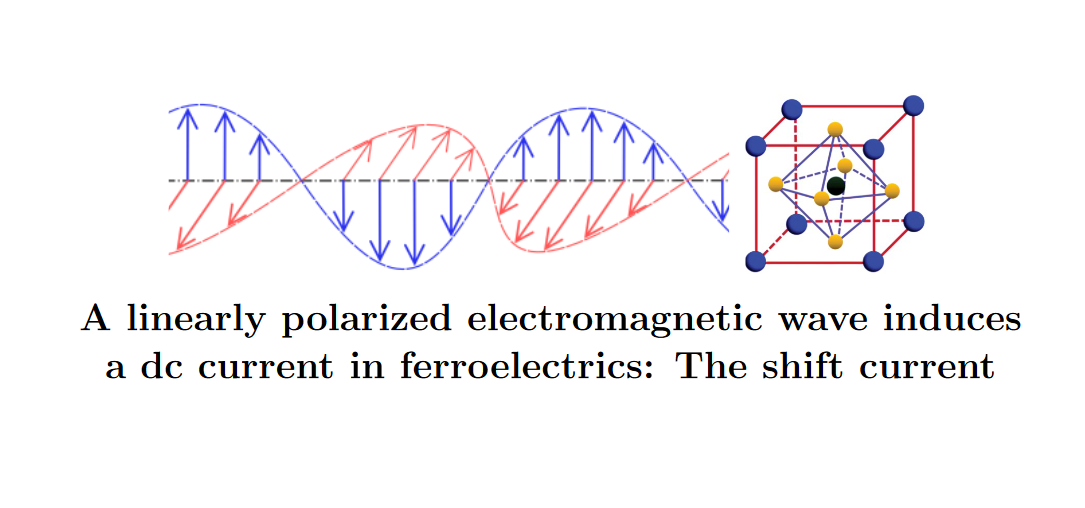The Resta model for the shift current in all situations
In certain materials, when we apply an electric field (it could be that of light) that vibrates at a certain frequency, it can create a direct current, a steady flow of electrical charge. This current is special because its strength depends on the square of the electric field’s strength. This phenomenon is called “shift current.” Shift current happens because the light pushes electrons around in a very specific way.

The theory behind shift current was first developed for crystalline systems, which are made of repeating patterns of atoms. It also assumes that the electrons in these materials can be treated as if they’re moving independently. The behaviour of these electrons is influenced by the geometry of the material, specifically the way these electrons behave in a quantum way.
Interestingly, this current has also been observed even in materials that are very disordered. This shows that the shift current is not just something that depends on how perfect the crystal structure is. The behaviour of the shift current seems to depend on the geometry of the material, rather than just the details of its atomic structure.
However, until now, there hasn’t been a simple, clear way to explain shift current in all situations, especially when the electrons are interacting with each other or in materials that aren’t perfect crystals. Raffaele Resta presents now 1 a new model that solves that problem. The key idea is a concept called the “many-body shift vector,” which is a simple way to describe how the material’s overall polarization (its electric state) responds to the light. This shift vector helps us understand how the material behaves in a broader, more general context.
In the case of perfectly ordered crystals, this new theory reduces to the old explanation, which is much simpler to understand and apply.
Now, why does the shift current happen? When we shine light on the material, it excites the electrons. The rate at which this happens is proportional to the square of the electric field’s strength (that’s the frequency of the light). The excited electrons have a different electric polarization compared to the ground state of the material. As a result, the change in polarization creates a current. In other words, the light doesn’t just make the electrons move randomly — it specifically causes a difference in how the material’s polarization behaves, which leads to a current.
This behaviour can be understood as a “second-order response.” This means the effect is proportional to the square of the electric field. What’s different in this new explanation is that we don’t need to use complicated second-order physics calculations to explain it, unlike some older methods.
The new model focuses on linearly polarized light. It doesn’t cover circularly polarized light or a different kind of current known as “injection current.” But the paper does give a brief mention of these other situations.
In summary, shift current is a fascinating effect where light causes a material to produce a steady electrical current, and the Resta model gives a much clearer and broader way of understanding how this works, even in more complex materials.
Author: César Tomé López is a science writer and the editor of Mapping Ignorance
Disclaimer: Parts of this article may have been copied verbatim or almost verbatim from the referenced research paper/s.
References
- Raffaele Resta (2024) Geometrical Theory of the Shift Current in Presence of Disorder and Interaction Phys. Rev. Lett. doi: 10.1103/PhysRevLett.133.206903 ↩